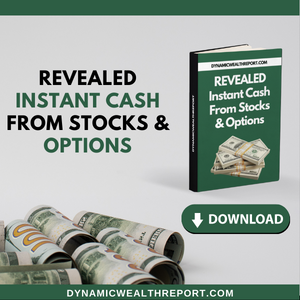5 Small-Cap ETFs That Knock Out The Competition
 Small-cap ETFs are the best way to take on extra returns
Small-cap ETFs are the best way to take on extra returns
When it comes to investing, small-cap stocks beat large caps as the best ETFs to buy.
Small caps have outperformed their larger twins for decades. That’s because many small-cap stocks still have plenty of growth in front of them. After all, it’ll take a lot of a behemoth like International Business Machines Corp. (NYSE:IBM) to get the ship moving. But for a small-cap stock, a few extra million in revenue could be all it takes to send shares skyrocketing.
Which is why small-cap stocks have tacked on an extra 253% in cumulative extra returns over large-cap stocks. That makes them must-haves for any long-term portfolio.
Considering their volatility, however, the best way to own small-cap stocks is through broadly diversified exchange-traded funds. With small-cap ETFs, investors get a diverse basket of them with easy, one-ticker access. That should help eliminate much of the risk associated with owning them.
With that in mind, here are five of the best ETFs to buy to take advantage of small-cap stocks.
Best ETFs to Buy #1: Vanguard Small-Cap Index Fund (VB)
Expenses: 0.06%
For those investors looking for a core small-cap ETF, skipping the $41 billion iShares Russell 2000 ETF (NYSEARCA:IWM) makes a ton of sense. The Vanguard Small-Cap Index Fund (NYSEARCA:VB) could be a better choice for us home-gamers.
VB’s index of small-cap stocks is less famous than the Russell 2000, but the CRSP U.S. Small Cap Index still packs a punch. The index covers roughly the entire small-cap stock universe- currently at 1,431 stocks. The index is balanced is between “growth” and “value” small-cap stocks. That allows it to profit in all sorts of market environments.
And profit it has: VB has managed to return a 9.33% annual return since its inception in 2004. That’s enough to turn $100,000 into $236,000-plus!
Aside from that great return, the reason to choose VB over IWM is cost. As a Vanguard small-cap ETF, VB is basically free to own. Expenses run at just 0.06%, or $6 per $10,000 invested. The IWM is more than triple that.
In the end, VB makes for a great core small-cap ETF. It has the low expenses, diversification and returns to help power your portfolio.
Best ETFs to Buy #2: WisdomTree SmallCap Dividend ETF (DES)
Expenses: 0.38%
Dividends are a sign of financial discipline for any firm. But this fact is exacerbated when it comes to smaller firms. Often small-cap dividend payers come with steady cash flows and low debt. That has many has positive effects, including lower volatility, and perhaps most important of all, higher returns.
The WisdomTree SmallCap Dividend ETF (NYSEARCA:DES) is the way to get those small-cap stocks dividends.
Like all of WisdomTree’s ETFs, DES tracks a propriety index. In this case, DES focuses on the bottom quarter of the broader WisdomTree Dividend Index. DES uses screens and weights its portfolio according to the “proportionate share of the aggregate cash dividends each component company is projected to pay in the coming year.”
Basically, DES overweight’s small-cap stocks that pay bigger dividends. Top holdings for the ETF include cigarette vendor Vector Group (NYSE:VGR) and refiner PBF Energy (NYSE:PBF). Currently, DES has a 30-day SEC yield of 3.21%.
That yield, along with small-cap stocks dominance has helped DES produce an annual total return of nearly 15% over the past five years. Expenses run 0.38%, amounting to $38 per $10,000 invested.
Best ETFs to Buy #3: iShares MSCI EAFE Small-Cap ETF (SCZ)
Expenses: 0.39%
The small-cap premium doesn’t just stop at the U.S. borders. There’s a whole world of smaller firms internationally that most investors completely ignore. That’s a real shame. But the iShares MSCI EAFE Small-Cap ETF (NYSEARCA:SCZ) makes fixing that fact quite easy.
SCZ tracks a basket of small-cap stocks from developed market nations included in the popular EAFA. So you’re looking at European, Japanese and Australian small-cap stocks.
All in all, the ETF holds more than 1,600 different international small-caps. With such a huge swath of stocks and its intentional focus, SCZ fills a very important and under-utilized niche for investors and it is a perfect example of what exchange-traded funds are really for.
As for returns, SCZ has been mixed. Born after the recession and when the dollar has been riding high, the small-cap ETF has managed to return 4.58% since its inception. Its five-year average, however, is much better at 12.77% annually. With investors shifting back to international equities, SCZ could keep the returns going.
Add in its low 0.39% expenses ratio and you have a recipe for small-cap success.
Best ETFs to Buy #4: JPMorgan Diversified Return U.S. Small Cap Equity ETF (JPSE)
Expenses: 0.29%
Smart-beat is all the rage these days. The idea is that by screening for certain winning fundamental factors, investors can craft a better index than traditional market-cap weighted measures. Most smart-beta ETFs seem to be falling flat on their promises. But the JPMorgan Diversified Return U.S. Small Cap Equity ETF (NYSEARCA:JPSE) is one that works.
JPSE utilizes a rules-based approach that combs through the broader Russell 2000 for several factors that J.P. Morgan feels leads to outperformance. These include screens for value, quality and momentum factors.
By looking for these things and kicking out stocks that don’t meet its proprietary scoring system, JPSE hopes to outperform the Russell. And looking at its top holdings vs. the benchmark index, they aren’t anywhere close to each other.
In terms of the ETFs returns, JPSE has done well in its short lifespan — it’s only been around for a year. But in that time, it’s managed to produce a 16.16% return. That’s enough to beat the Russell 2000 and the more concentrated S&P 600 small-cap index.
For investors looking for a bit more from small-cap ETFs, the JPSE makes a great addition to a portfolio.
Best ETFs to Buy #5: PowerShares S&P SmallCap Low Volatility Portfolio (XSLV)
Expenses: 0.25%
One of the problems with small-cap ETFs and stocks is that they tend to be more volatile that larger firms. As a result, many older investors tend to bypass them as they can’t make up for the drawdowns. However, there are ways to get much of the upside of small-cap stocks while mitigating the downside.
The PowerShares S&P SmallCap Low Volatility Portfolio (NASDAQ:XSLV) is one way to do just that.
XSLV seeks to lower the volatility of a basket of small-cap stocks. The ETF will screen the broader S&P 600 for those firms that have exhibited the lowest volatility over the past year. The ETF will select the 120 lowest for inclusion to the fund. With that, investors get a portfolio of small-cap stocks that don’t jump around as much as the full index.
For older investors or those in retirement, this could be a godsend. They can now participate in the market-cap size upside without its biggest drawback. It also means higher returns. XSLV has managed to outpace the broader benchmark by around 1.9% per years since its inception in 2013.
Meanwhile, expenses for the ETF run a cheap 0.25%. That’s cheaper than some traditional market-cap weighted ETFs.
As of this writing, Aaron Levitt did not hold a position in any of the aforementioned securities.
See Also From InvestorPlace:
- 7 Tech Stocks to Buy That Sport Amazon-Like Growth
- 10 Dividend Growth Stocks for 2018
- 7 Large-Cap Stocks With a Potential Financial Dark Side
Category: Small-Cap Stocks



